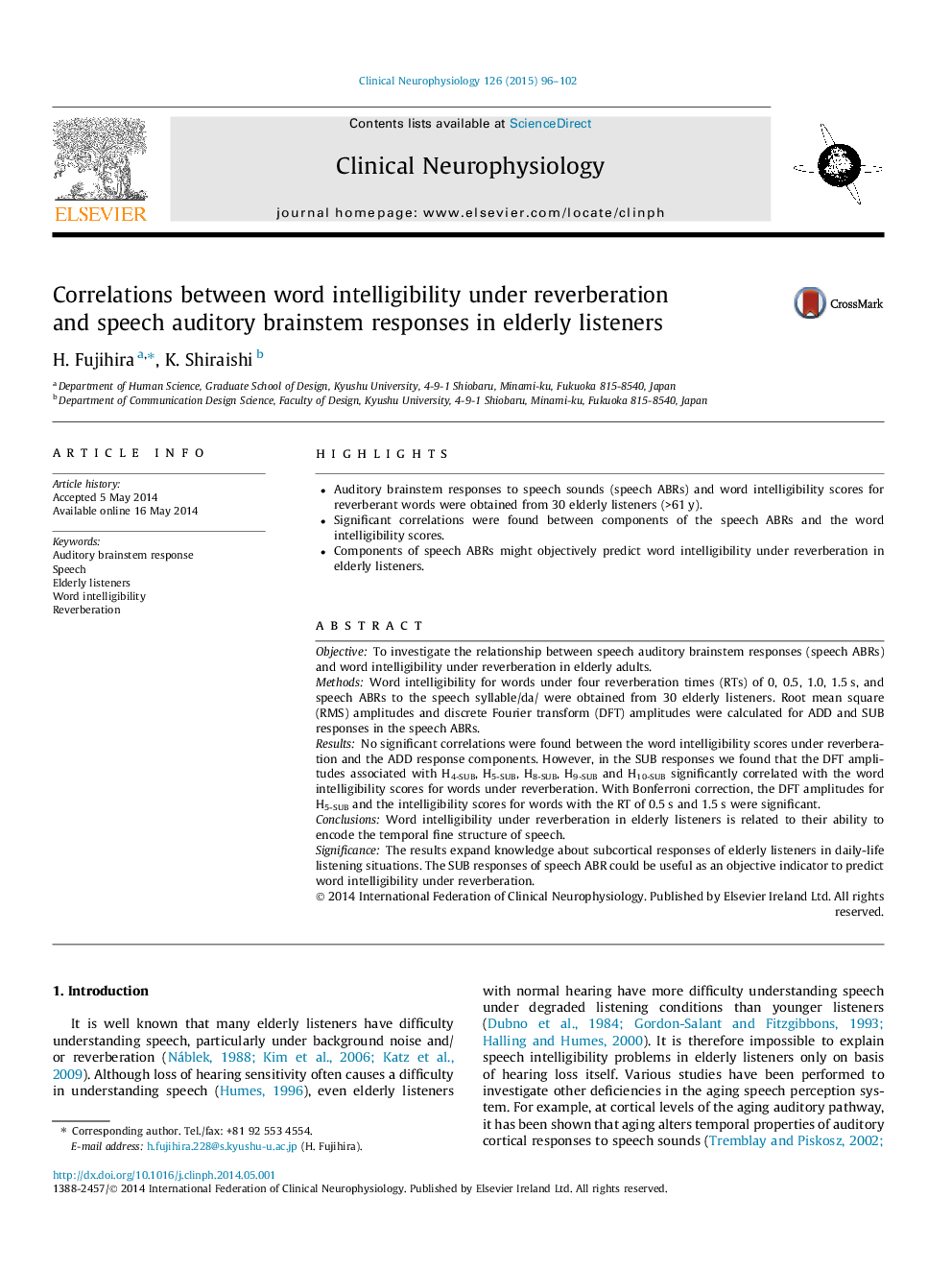| Article ID | Journal | Published Year | Pages | File Type |
|---|---|---|---|---|
| 3043214 | Clinical Neurophysiology | 2015 | 7 Pages |
•Auditory brainstem responses to speech sounds (speech ABRs) and word intelligibility scores for reverberant words were obtained from 30 elderly listeners (>61 y).•Significant correlations were found between components of the speech ABRs and the word intelligibility scores.•Components of speech ABRs might objectively predict word intelligibility under reverberation in elderly listeners.
ObjectiveTo investigate the relationship between speech auditory brainstem responses (speech ABRs) and word intelligibility under reverberation in elderly adults.MethodsWord intelligibility for words under four reverberation times (RTs) of 0, 0.5, 1.0, 1.5 s, and speech ABRs to the speech syllable/da/ were obtained from 30 elderly listeners. Root mean square (RMS) amplitudes and discrete Fourier transform (DFT) amplitudes were calculated for ADD and SUB responses in the speech ABRs.ResultsNo significant correlations were found between the word intelligibility scores under reverberation and the ADD response components. However, in the SUB responses we found that the DFT amplitudes associated with H4-SUB, H5-SUB, H8-SUB, H9-SUB and H10-SUB significantly correlated with the word intelligibility scores for words under reverberation. With Bonferroni correction, the DFT amplitudes for H5-SUB and the intelligibility scores for words with the RT of 0.5 s and 1.5 s were significant.ConclusionsWord intelligibility under reverberation in elderly listeners is related to their ability to encode the temporal fine structure of speech.SignificanceThe results expand knowledge about subcortical responses of elderly listeners in daily-life listening situations. The SUB responses of speech ABR could be useful as an objective indicator to predict word intelligibility under reverberation.
